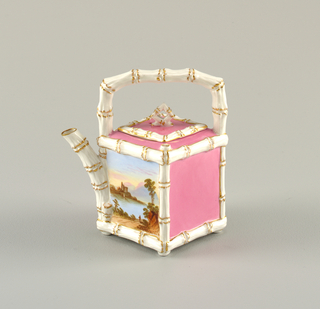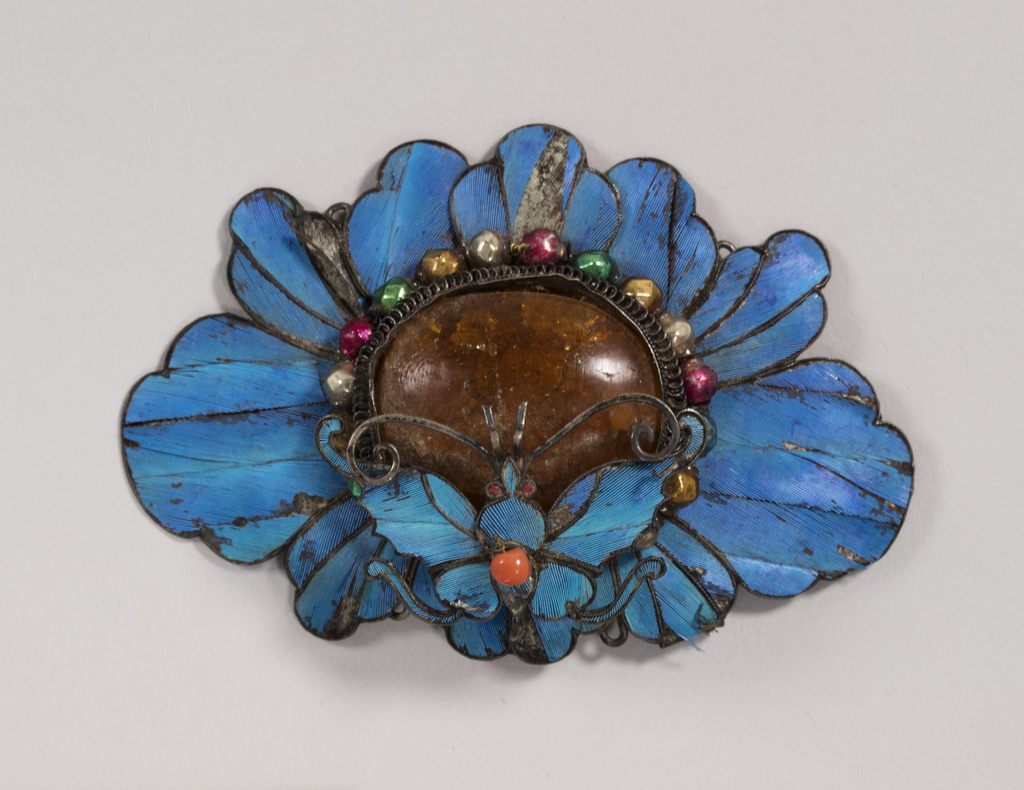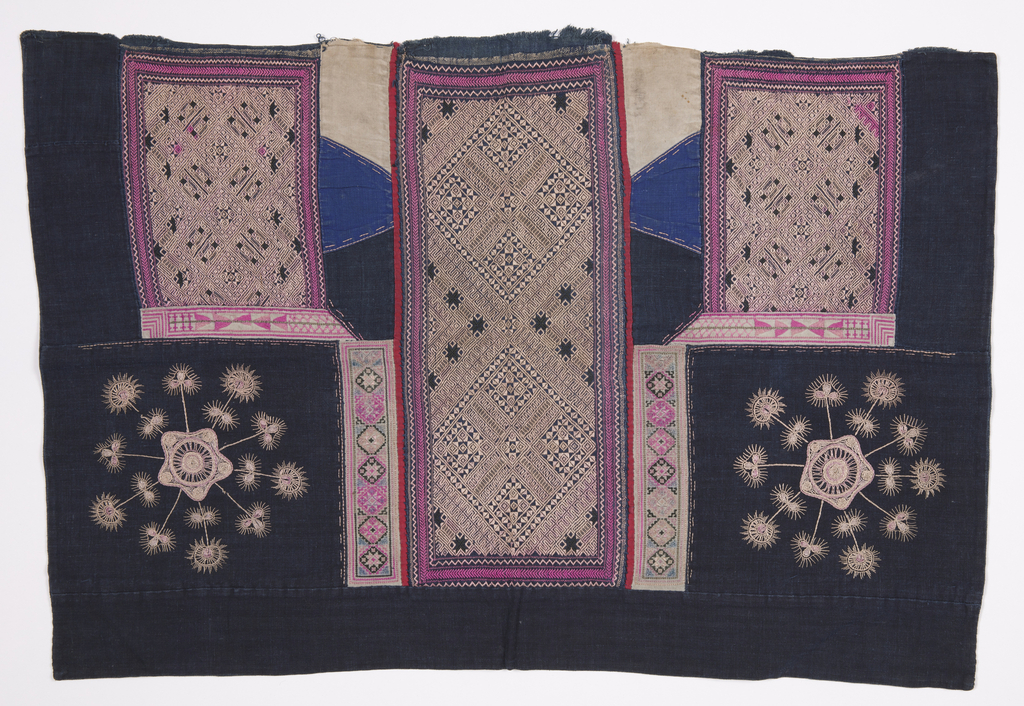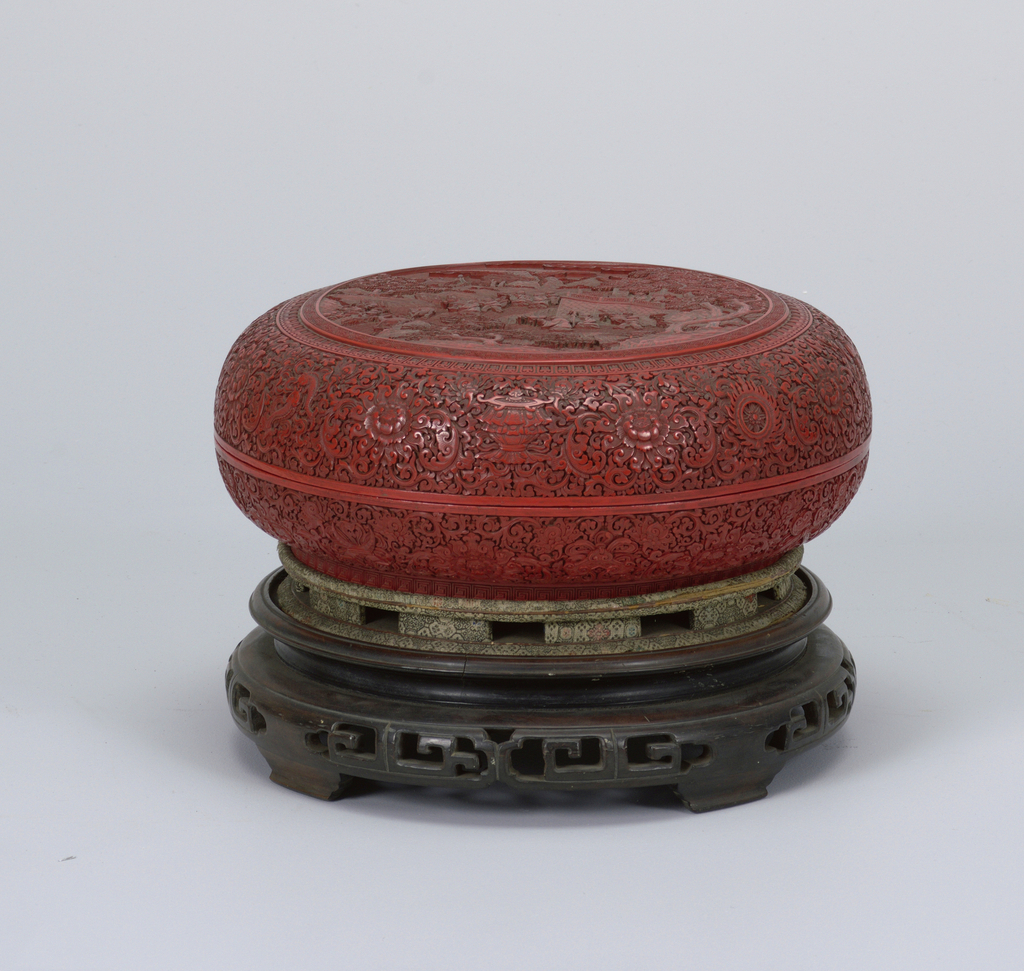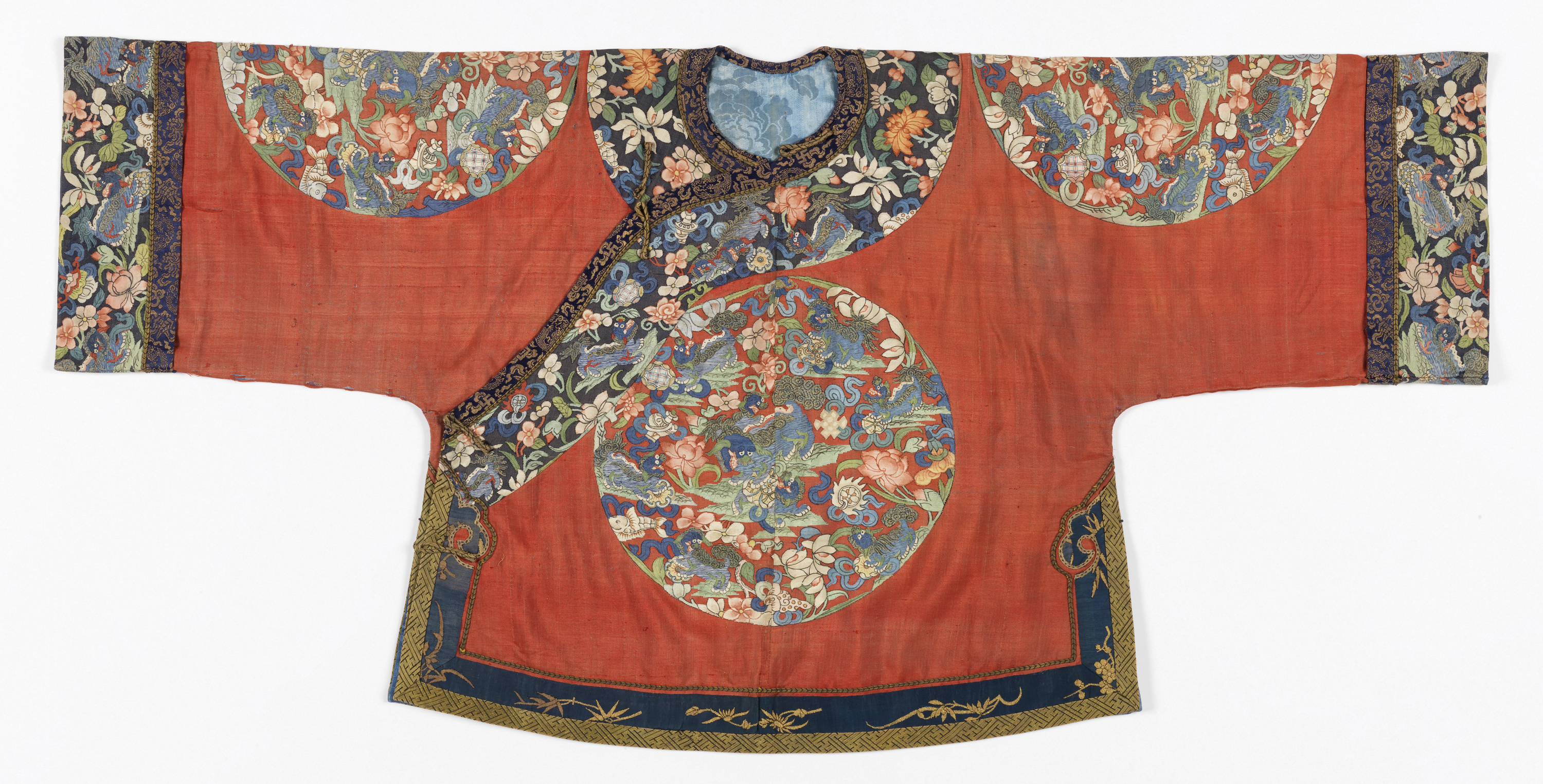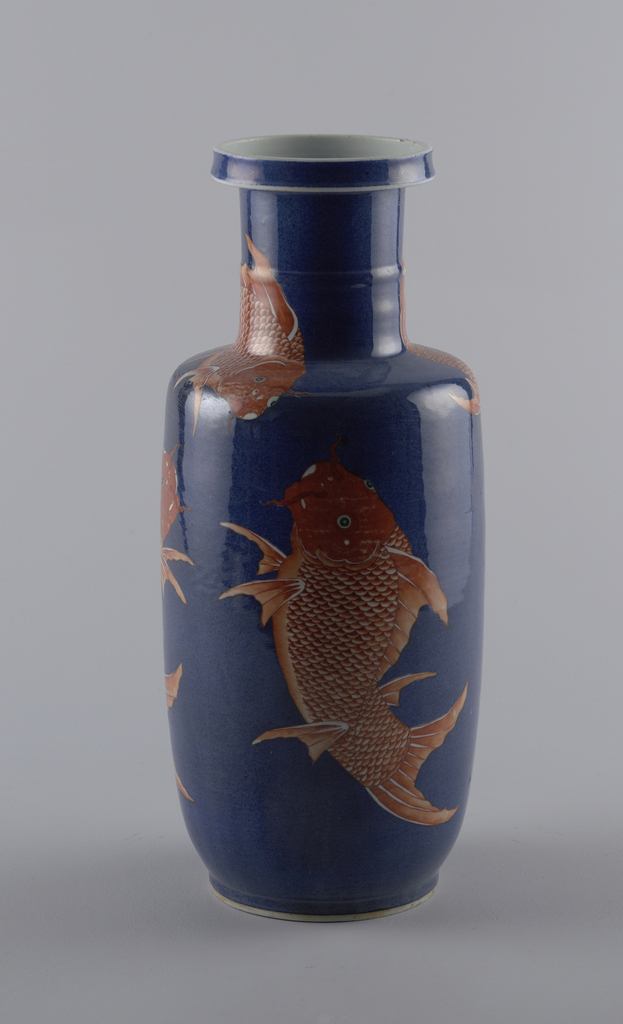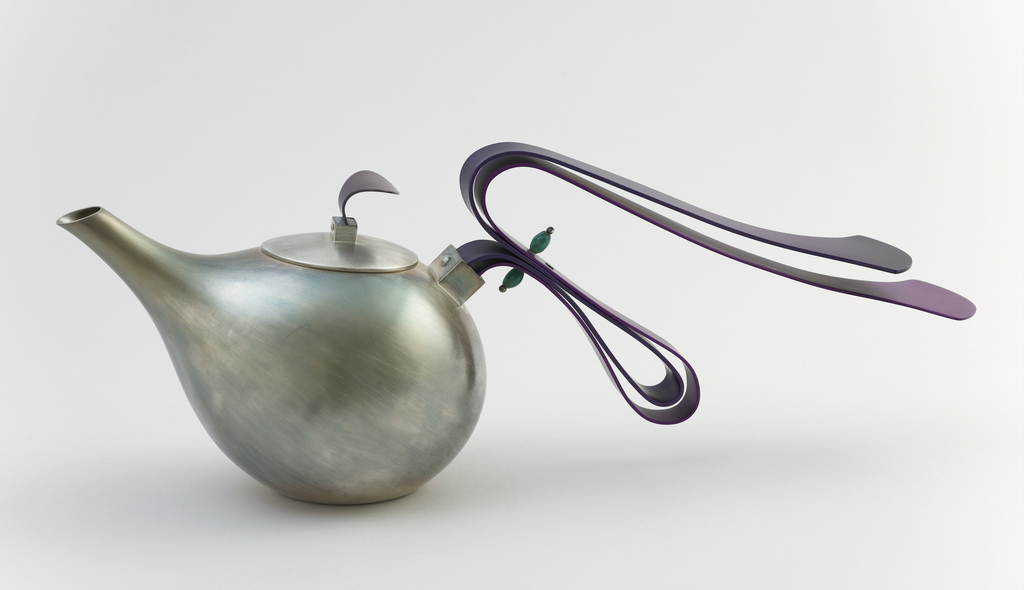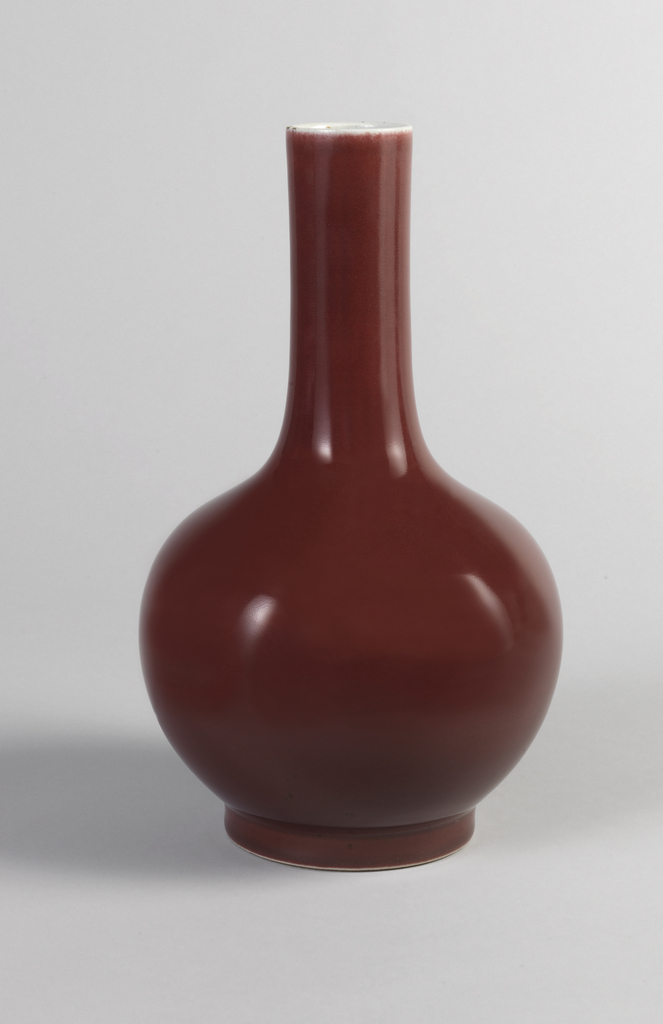Author: Zenia Malmer To the modern eye, this 19th century teapot, made by Edwin James Drew Bodley, who was in charge of an English china and earthenware manufacturer in Staffordshire, might border on kitsch. The spout, handle and edges are decorated with moulded bamboo stalks, with gilding to accentuate their nodes. Bright pink panels feature...
Author: Morgan Albahary Made in China around 1900, this small yet striking ornament depicts a delicate butterfly alighting on the plush petals of a blossoming flower. With its profusion of iridescent kingfisher feathers, which have been deftly cut and inlaid into delineated segments of silver sheet, the ornament’s materiality firmly grounds it within the tradition...
Author: Joanne Schmidt In celebration of the third annual New York Textile Month, members of the Textile Society of America will author Object of the Day for the month of September. A non-profit professional organization of scholars, educators, and artists in the field of textiles, TSA provides an international forum for the exchange and dissemination...
To celebrate the opening of Saturated: The Allure and Science of Color (May 11, 2018-January 13, 2019), Object of the Day this month will feature colorful objects from the exhibition. This red lacquer box has a short circular foot and a precisely fitted circular lid. Together these elements combine to present a unified whole. The box rests...
Examples of Chinese Ornament Selected from Objects in the South Kensington Museum and Other Collections (figure 1) was written by Owen Jones (1809-1874), one of the most influential English architects, designers, and design theorists of the nineteenth century. Jones selected 100 full-color plates sourced from the motifs of Chinese ceramics, cloisonné works, and carpet designs,...
The Qing imperial rulers (1644-1911) were of Manchu ethnicity, and ruled over a mostly Han population. For centuries, Manchu women were required to wear long one-piece robes and Han women two-piece outfits that included a jacket and skirt. Featuring elements of both traditions, this Manchu jacket demonstrates the increasing fusion of these fashions in the...
After nearly sixty years of inactivity, the kilns at Jingdezhen were restored by the Kangxi emperor around 1680. Considered to be one of the greatest Chinese emperors for the progress in the natural sciences and the arts China made under his rule, the Kangxi emperor reigned from 1662 to 1722. During this time, the Jingdezhen...
This teapot demonstrates a unique way of creating organic and curved lines, which can be seen in the handle. Chunghi Choo’s calligraphy brush strokes served as the inspiration for the handle and knob. According to Choo, the “sweeping movements of the brush…give it a flowing line of energy.”[1] Chunghi Choo studied painting, including Chinese brush...
The deep red glaze on this porcelain vase is derived from copper, a metal which is notoriously difficult to control under the heat of a kiln. The distinct oxblood color is created when copper is starved of its oxygen during the firing (in a smoky, oxygen reduced kiln) and re-oxidized in the cooling. The resulting...
